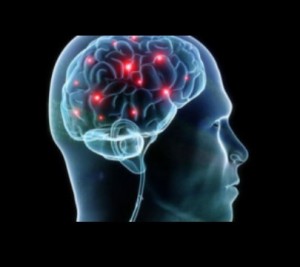The first step to solving a problem is to define exactly what the problem is. Anxiety can be a normal feeling, and you don’t need professional help for normal anxiety. However, when anxiety is excessive or severe, it can be a disabling problem. A serious anxiety problem, an anxiety disorder, interferes with your ability to function at your best and enjoy life.
Understanding Anxiety:
Anxiety is feeling fear when there is no immediate threat, or unrealistically expecting danger when the actual threat is small. Systems for alert and alarm are part of the normal wiring of the brain and nervous system. In anxiety these systems are activated when they should not be, and lead to the symptoms we experience. Anxiety is not only how we feel, but also affects how we think and relate to other people. We know from many studies that some people are genetically predisposed to develop anxiety disorders. However, genetics are not the whole story. There is not one cause for anxiety, there are many, and understanding these causes is one part of treating the problem.
As a group Anxiety Disorders are the most common mental health problems except for substance abuse. Besides the subjective anxious feeling, anxiety can cause physical symptoms most anywhere in the body. These include muscle tension, shakiness, feeling short of breath, change in heartbeat, queasy stomach, dizziness, and many more. There are different types of anxiety, and a person may have one type, more than one type, and also may have anxiety as well as other mental health problems such as depression.
Generalized anxiety is very common, and is characterized by excessive worry and chronic tension. Everyone worries about something somewhere along the line, but with generalized anxiety the worry is every day, and often about things others don’t worry about. Often people with generalized anxiety have been worriers for as long as they can remember. With the worry comes chronic tension so that the person always feels uptight or on edge, and has great difficulty relaxing.
Panic attacks are sudden attacks of severe anxiety that may seem to come out of nowhere. Physical symptoms, such as those mentioned above, are a major part of panic attacks. The symptoms are often so severe that people feel that they are dying or going crazy. The attacks usually lead to avoiding situations that they feel may bring on an attack, and the avoidance becomes a big problem itself.
People with social anxiety may be free from anxiety most of the time, but have serious anxiety problems in social situations. They often feel that they are under scrutiny and being judged harshly when they are around other people. This social anxiety may be limited to certain situations, such as eating in public, or it may be pervasive and occur in most any situation involving other people. Low self esteem is usually a significant factor in social anxiety.
Phobic anxiety means that the anxiety is brought on by a certain thing or situation. There are many different types of phobias, such as ones related to certain animals, like spiders or snakes, or objects that others consider harmless like dolls, or situations involving enclosed spaces or high places. Often people with phobias just avoid what brings on the anxiety, and don’t seek treatment unless some life circumstance makes it so that they can’t avoid.
Obsessive compulsive disorder involves obsessions or compulsions, but usually both. Obsessions are repetitive disturbing thoughts, often of some possible imminent harm, that seem to intrude into the person’s mind. Compulsions are repetitive actions that people feel they must do even if it doesn’t make sense to anyone else. Typical compulsions include handwashing or other cleaning, counting, and checking things over and over again. Compulsive actions are often the only way people feel that they can handle anxiety related to obsessive thoughts.
Posttraumatic stress disorder, commonly abbreviated PTSD, involves anxiety and other symptoms related to going through one or more traumatic situations. The trauma usually involves a significant threat of, or actual death or serious injury. This includes war, violent crimes, natural disasters, and others. Unfortunately such trauma is not rare, and so PTSD is also common. Re-experiencing the trauma through nightmares or intrusive trauma memories is a major component of PTSD, and so is avoidance.
Next: Help for Anxiety

